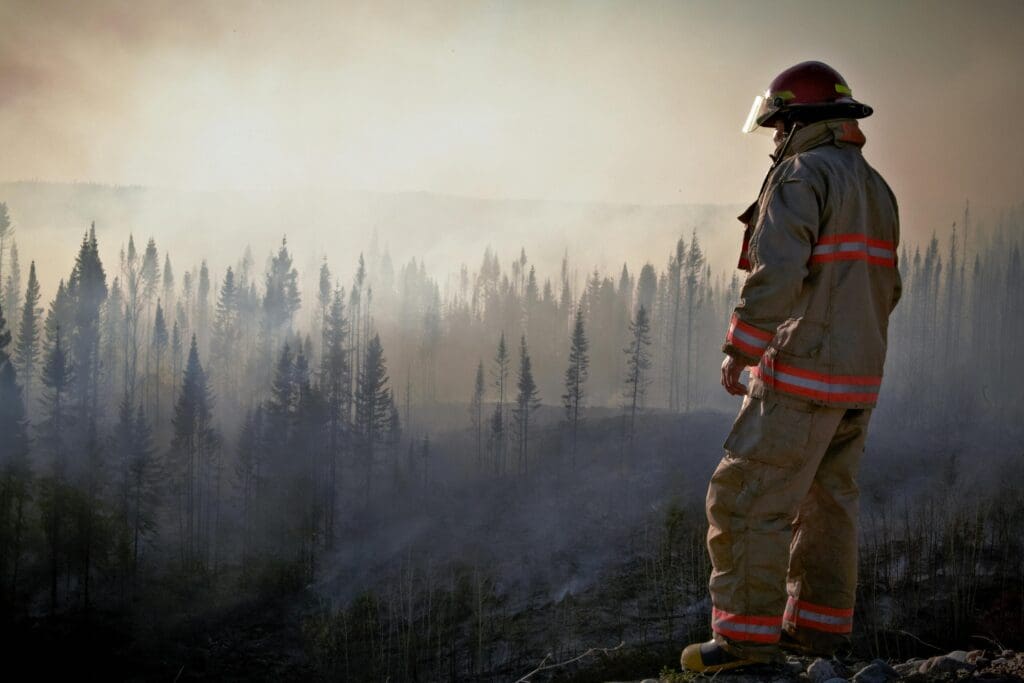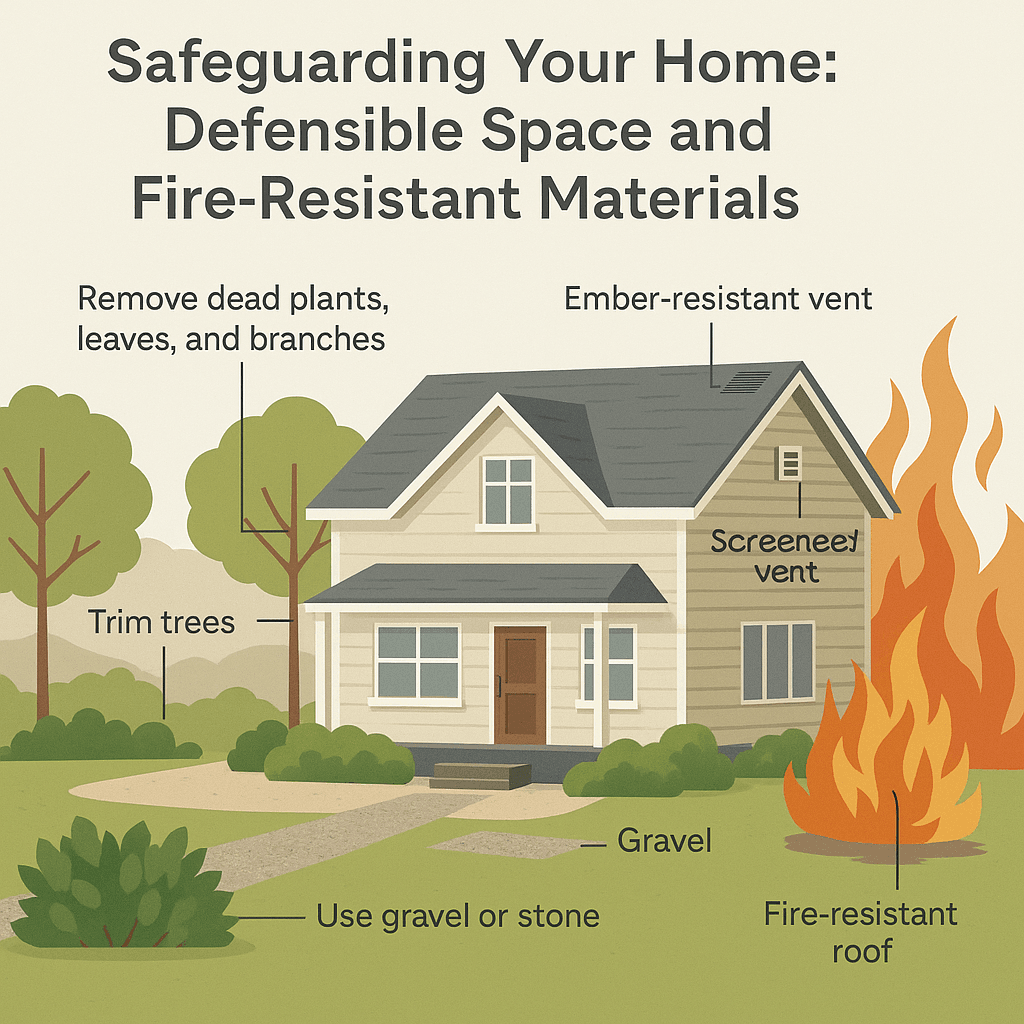Living in wildfire-prone areas comes with its unique set of challenges. One of the most critical is wildfire preparedness.
Understanding how to prepare for a wildfire can make a significant difference. It can protect your home, your business, and most importantly, the lives of you and your loved ones.
This guide aims to provide you with comprehensive information on wildfire preparedness. It’s designed to help you navigate the complexities of preparing for such an event.
From creating a wildfire action plan to understanding evacuation procedures, we’ll cover it all. We’ll also delve into how to stay informed during a wildfire and the importance of community support.

Remember, preparation is key. With the right knowledge and resources, you can significantly improve your readiness for a wildfire. Let’s dive in and explore how to prepare for a wildfire effectively.
Understanding Wildfire Risks and the Importance of Preparedness
Wildfires are unpredictable. They can spread quickly, causing widespread devastation. Recognizing the risk they pose is crucial for effective preparedness.
Understanding wildfire risks begins with knowing your area’s susceptibility. Some regions face higher wildfire threats due to climate, vegetation, and weather patterns. These factors can significantly influence wildfire behavior.
Preparedness is essential. It helps mitigate the impact of wildfires on lives and properties. A solid preparedness plan can mean the difference between staying safe and facing severe consequences.
Consider the following aspects of wildfire risks:
- Frequency and intensity of wildfires in your area
- Local vegetation and weather patterns
- Proximity to fire-prone zones
- Community resources for wildfire management

Knowing these elements can aid in tailoring your preparedness plan. Emphasizing community efforts can enhance overall safety. Share this knowledge with neighbors to strengthen collective preparedness.
By understanding these risks, you better prepare yourself and your loved ones. Prioritizing wildfire preparedness can lead to enhanced protection and peace of mind. It’s a smart step towards safeguarding your future.
Creating a Wildfire Action Plan for Your Family or Business
Crafting a wildfire action plan is vital for ensuring the safety of both your family and your business. It provides a structured approach to handling emergencies, reducing stress during critical times.
Start by identifying escape routes and make sure everyone knows them. Clear communication is essential, so establish reliable methods to stay in touch during an emergency. Consider the roles and responsibilities for each family member or employee to streamline evacuation efforts.
Key elements of a wildfire action plan include:
- Designated meeting points outside the danger zone
- A list of essential items to grab during evacuation
- Contact details for emergency services and key family members
- Backup communication tools like radios or phone chargers
Rehearse your plan regularly with all involved to ensure everyone knows their part. By doing so, you reinforce the plan’s effectiveness and increase your preparedness level. Remember, a well-prepared action plan can save lives and protect your livelihood.
Safeguarding Your Home: Defensible Space and Fire-Resistant Materials
Creating a defensible space around your home is a key wildfire safety measure. This involves clearing away flammable vegetation and debris. By doing so, you reduce the risk of fire spreading to your home.
Consider using fire-resistant materials when building or renovating. This includes selecting roofing, siding, and decking materials that can withstand high heat. This can protect the structural integrity of your property.

To enhance your home’s wildfire resilience, focus on these tasks:
- Remove dead plants, leaves, and branches
- Trim trees to create space between branches and structures
- Use gravel or stone instead of wood mulch in landscaping
- Install ember-resistant vents and screens
These efforts do more than protect your property. They also support community safety by reducing overall fire spread. Prioritizing these actions can greatly improve your home’s ability to withstand wildfires.
Essential Items for Your Emergency Supply Kit
A well-prepared emergency supply kit is crucial during wildfires. Having essential items ready can make all the difference. It helps ensure your safety and comfort when you need to evacuate quickly.
Your supply kit should cover basic needs for at least three days. Consider food, water, and first aid supplies as must-haves. Keep your kit in an accessible location.
Include these essential items in your kit:
- Non-perishable food and bottled water
- Medications and personal hygiene products
- Flashlight and extra batteries
- N95 masks to protect against smoke inhalation
- Copies of important documents and contact information
- Battery-powered or hand-crank radio for updates
- Cash and a portable phone charger
Remember to regularly check and update your kit. Replace items that may expire or become unusable over time. These small steps can reduce stress and enhance preparedness during wildfire events.
Staying Informed: How to Get Timely Wildfire Updates
Staying informed is key during wildfire emergencies. Access to timely updates helps you make crucial decisions fast. It’s vital to know the most reliable sources for wildfire information.
Use these resources to stay updated:
- Local news and weather channels
- Community alert systems and mobile apps
- Social media updates from fire departments
- Emergency broadcasts on battery-powered or hand-crank radios
Make sure to register for community alerts in your area. These tools help you get critical information whenever needed. Prioritize clear communication with family about news updates to coordinate actions efficiently.
Evacuation Readiness: Knowing When and How to Leave Safely
Being ready to evacuate is an essential part of wildfire preparedness. First, understand evacuation orders; they are often categorized as Ready, Set, Go. This structured approach helps you respond quickly when needed.
Once evacuation seems imminent, gather your emergency kit and essentials promptly. It’s crucial to know your routes and have a backup plan. Check that your vehicle is fuelled and ready for a smooth exit.
Follow these key steps for safe evacuation:
- Listen to authorities and leave promptly when advised
- Keep your vehicle facing the road for a quick departure
- Inform family and emergency contacts about your status
Remember to pack valuables and necessary items efficiently. Keep calm and focus on your family’s safety first. Practice evacuation drills periodically to ensure everyone knows their roles and responsibilities in an actual emergency.
Protecting Your Health: Air Quality and Smoke Inhalation Safety
During a wildfire, smoke can greatly impact air quality, affecting health. Protecting yourself is crucial for well-being. Stay indoors when possible and keep windows and doors closed to prevent smoke from entering.
Consider these tips to safeguard your health:
- Use N95 masks for outdoor activities
- Monitor air quality through reliable sources
- Utilize air purifiers indoors when available
If you suffer from respiratory issues, consult your healthcare provider for advice and medication. Avoid strenuous outdoor activities when air quality is poor. By taking these precautions, you can minimize the risks associated with wildfire smoke inhalation.
Preparing Your Business for Wildfire Threats
Businesses in wildfire-prone areas must be prepared for potential threats. Ensuring the safety of employees and property is a top priority. Develop a comprehensive business continuity plan.
Incorporate these vital steps into your strategy:
- Identify and protect critical assets
- Back up important data and documents securely
- Equip your business with fire extinguishers and smoke detectors
Additionally, cross-train staff on emergency procedures to ensure everyone knows their role. Regular drills can enhance preparedness and foster a culture of safety. By taking these proactive measures, your business can maintain resilience during wildfire events.
Community Support: Helping Neighbors and Local Resources
Communities play a crucial role in wildfire preparedness. Engaging with your neighbors can create a network of support and resilience. By working together, families can share resources and knowledge.
Consider these community initiatives:
- Organize neighborhood meetings on wildfire readiness
- Share information on local emergency services and shelters
- Volunteer to assist vulnerable community members
Getting involved with local organizations bolsters community readiness. These efforts help ensure everyone knows what to do when a wildfire threat arises. Collaboration strengthens community bonds and ensures no one is left unsupported during emergencies.
After the Wildfire: Returning Home and Recovery Steps
Once the wildfire threat has passed, returning home requires careful attention. Safety is the foremost concern for you and your loved ones. Begin by checking for official information that indicates it’s safe to go home.
When you arrive, be cautious and observant. Damages can pose hidden dangers. Look out for unstable structures, broken utilities, and other hazards around your property.
Here are vital steps to consider:
- Inspect your home for structural damage before entering
- Document damage with photos for insurance claims
- Ventilate your home to clear out lingering smoke odors
Recovery takes time, so lean on community resources for support. Local organizations often provide aid and guidance during these times. Remember, you’re not alone in this journey toward rebuilding and healing. Reach out and connect with others in your community for continued support and encouragement.
Conclusion: The Ongoing Effort to Prepare for a Wildfire
Wildfire preparedness is a continuous process that demands our vigilance. Our safety and peace depend on these efforts. By planning and acting now, you reduce risks and protect what’s valuable.
Equally important is staying informed and adaptable. Wildfire conditions can change rapidly, so regular updates and practice are key. Your proactive measures today ensure resilience for tomorrow. Embrace this commitment to safety and community wellbeing, knowing it’s an investment in a safer future. Stay informed, stay prepared, and together, we can face these challenges with courage and confidence.


